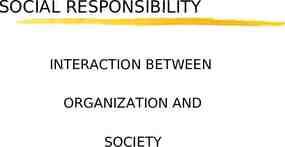AFFIRMATIVE ACTION IN COLLEGE ADMISSIONS DR. CHRISTINE KIRACOFE PURDUE
19 Slides199.01 KB
AFFIRMATIVE ACTION IN COLLEGE ADMISSIONS DR. CHRISTINE KIRACOFE PURDUE UNIVERSITY [email protected]
WHY GO TO COLLEGE? “Americans are brought up to believe that a college degree is a ticket to a better life” (Brookings Institute, 2014) Economic benefits Health benefits Greater sense of well-being But . . . before benefits can be realized, students must be admitted . . . Be able afford tuition (FINANCIAL AID!) . . . and graduate
DIFFERENT LEVELS OF ACCESS TO HIGHER EDUCATION White Students Higher Education available to men since Harvard University founded in 1636 Women first admitted to “Harvard Annex” Radcliffe College in 1879 Black Students First Black graduate of the University of Alabama in First Black student at University of Mississippi in 1962 Widespread rioting took two lives First Black student admitted to the Citidel in 1966 1965
“There are three times as many African Americans housed in prisons as there are Blacks who live in college dormatories” (U.S. Census Bureau, 2007)
AFFIRMATIVE ACTION, DEFINED Conceptualized under the Kennedy Administration – committee on equal employment opportunity in 1961 “[A government] contractor will not discriminate against any employee or applicant for employment because of race, creed, color, or national origin. The contractor will take affirmative action to ensure that applicants are employed, and that employees are treated during employment, without regard to their race, creed color, or national origin”
“RACE-CONSCIOUS” ADMISSIONS IN COLLEGES & UNIVERSITIES Started in the mid- to late-1960s Pew Research: “Are affirmative actions programs designed to increase the number of Black and minority students on college campuses . . . ‘good’ or ‘bad’? 2003: 60% indicated ‘good’ 2017: 71% indicated ‘good’
COLLEGE ADMISSIONS HAVE NEVER BEEN A “LEVEL” PLAYING FIELD Legacy admits Children of faculty/staff admits Donor family admits Recent admission scandals
14TH AMENDMENT: EQUAL PROTECTION CLAUSE No State shall make or enforce any law which shall abridge the privileges or immunities of citizens of the United States; nor shall any State deprive any person of life, liberty, or property, without due process of law; nor deny to any person within its jurisdiction the equal protection of the laws.
EQUAL PROTECTION TESTS Rational Basis Test Default test Intermediate Basis Test Gender Strict Scrutiny Fundamental right Suspect class Legitimate governmental interest & narrow tailoring requirements
CASE LAW
REGENTS OF THE UNIVERSITY OF CALIFORNIA V. BAKKE Allan Bakke applied to the University of California at Davis Medical School in 1973 & 1974 100 total “seats” filled through two parallel admissions programs 84 seats through ‘regular’ admissions Minimum GPA of 2.5/4.0 required 16 seats reserved for students who were “economically and/or educationally disadvantaged minority students” GPA requirement waived
REGENTS OF THE UNIVERSITY OF CALIFORNIA V. BAKKE U.S. Supreme Court held this program was UNCONSTITUTIONAL Race can be taken into account However, reserving seats for minority students is illegal
TEXAS HOUSE BILL 588: “TOP TEN PERCENT PLAN” Signed into law by then-Texas Governor George W. Bush on May 20, 1997 Texas Colleges and Universities: [S]hall admit an applicant for admission to the institution as an undergraduate student if the applicant graduated in one of the two school years preceding the academic year for which the applicant is applying for admission from a public or private high school in this state accredited by a generally recognized accrediting organization with a grade point average in the top 10 percent of the student's high school
UNIVERSITY OF MICHIGAN CASES (U.S. SUPREME COURT, 2003) Gratz v. Bollinger Grutter v. Bollinger Undergraduate admissions Law school admissions Tens of thousands of applicants Far fewer applications Point system Holistic review – “plus” factors Strict scrutiny applied Strict scrutiny applied Unconstitutional Constitutional
FISHER V. UNIVERSITY OF TEXAS U.S. Supreme Court (Fisher I, 2013) & (Fisher II, 2016) Two white, female applicants challenged Texas’ Ten Percent Law UT-Austin’s admissions program survived strict scrutiny 4-3 decision (Justice Scalia had recently died & Justice Kagan recused herself)
STUDENTS FOR FAIR ADMISSIONS Non-profit organization of 20,000 members “Believe racial classifications and preferences in college admissions are unfair, unnecessary, and unconstitutional” Litigation against Harvard Alleged discrimination against Asian students Abnormally low personal rating scores by admissions personnel; High personal ratings by alumni interviewers
SFFA, CONTINUED Expert witness found that if Harvard admissions were made solely on the basis of academics “Asian-Americans would comprise over 50% of the admitted class” U.S. District Court for Massachusetts found for Harvard November 2020, First Circuit Court of Appeals affirmed Next step: U.S. Supreme Court?
WHY THIS MATTERS College admission decisions have never been made “on a level playing field” Underrepresented minority students often unable to earn “legacy” admissions due to historical barring of minority students at many universities until the 1960s Underrepresented minorities less likely to come from donor families (for the same reason)
WHAT YOU CAN DO Advocate for all students in the admissions and financial aid process, but remember that not all students have had equal opportunities Manchester Example 5th generation college graduate not possible for the vast majority of underrepresented minority students
























